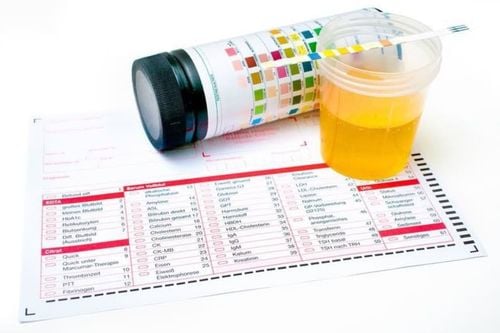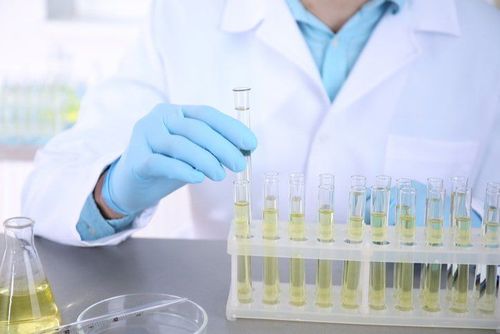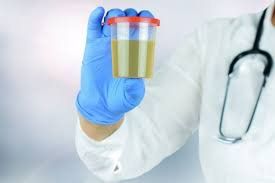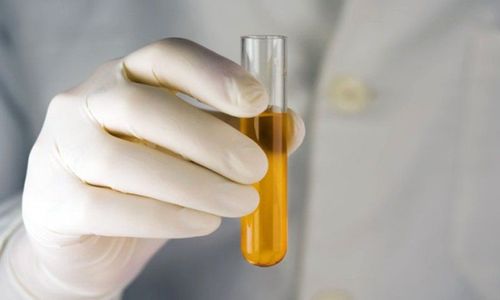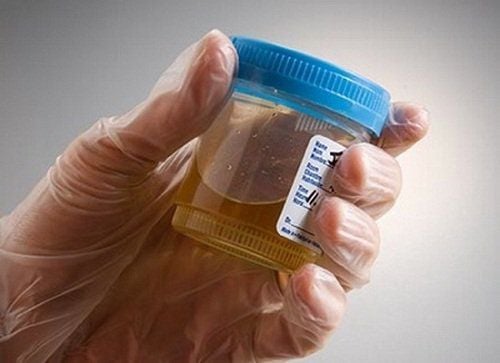MSc professionally consulted the article. Dr. Do Thi Hoang Ha - Doctor of Biochemistry, Department of Testing - Vinmec Hai Phong International General Hospital.
Urine testing is an important diagnostic tool that helps identify hidden diseases in the body. Since urine is the primary excretory fluid, it contains many of the body's waste products. Periodic urine testing is a simple and necessary task to know your health status. Although this is a fairly familiar test to many people, not everyone knows how to collect urine properly so that the test is performed most accurately.
1. How much urine is enough?
The urine sample for testing must be clean and fresh. This urine sample enables routine tests, including a rapid urine analysis conducted with dipsticks. This test checks for the presence of protein, as well as other abnormal components such as red blood cells, white blood cells, urinary casts, phosphate crystals, and calcium oxalate… in the urine. When a specialized disease is suspected, the patient may be asked to take a urine sample with separate procedures to meet the necessary testing needs.
Depending on each specific sample collection procedure, the urine sample will be required to be prepared differently, but usually, the external genitalia must be cleaned and the first urine (about 100-200ml or after a few seconds of urination) must be discarded, then the midstream urine must be collected and stored in a sterile sample container. Urine samples are usually collected in the morning.
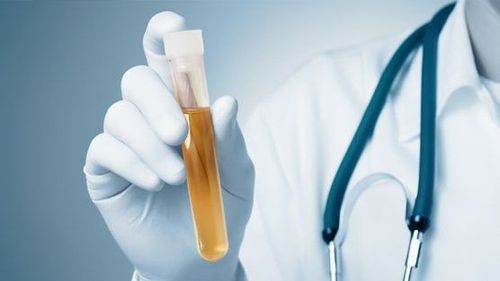
2. Do you have to fast to collect urine?
This is a question that many people want to know so that they can prepare well at home. For the most accurate test results, it is advisable to fast and urinate simultaneously.
Do not eat or drink before the test because the urine test only gives accurate results when the patient fasts 4-6 hours before the urine test or doesn’t eat breakfast after waking up. You shouldn’t eat a lot of foods that can change the color of urine such as sugar beets, raspberries, carrots, or rhubarb. Some drugs also change the color of urine such as anticoagulants, metronidazole, sulfonamide, iron sulfate...
In addition to fasting, the person taking the test also needs to avoid using stimulants such as tobacco, or coffee... for 12 hours before collecting urine to get accurate diagnosis results.
3. Take a urine test during menstruation
During menstruation, if you take a urine test, the results may not be accurate, because the urine sample may contain menstrual blood, which will affect the analysis results. People who are in their menstrual cycle or are near the beginning or end of their menstrual cycle should inform their doctor to wait until the next test.
In addition, taking many medications, including dietary supplements, will affect the results of the urine test. Some medications that affect the results of the urine test (causing false positives or false negatives for certain components in the urine) include vitamin B, ascorbic acid, phenazopyridine (Pyridium), rifampin, phenytoin (Dilantin) ... Tell your doctor if you are taking diuretics, as they will affect the accuracy of the test results, especially glucose in the urine. Therefore, before performing the test, the doctor may ask the patient to temporarily stop taking the medication to ensure the test is accurate.
4. How to collect urine?
There are two ways to collect urine: the patient can urinate by himself or through a bladder catheter.
4.1 Technique for collecting urine from a patient who can urinate by himself
The doctor may request a 24-hour urine test or a one-time collection of about 20ml.
Specifically, the one-time urine collection procedure is as follows:
Instruct the patient to clean the external genitalia and then urinate, the first and last urine in a pot, the middle urine in a pot;
The nurse wears gloves, puts the middle urine in a measuring tube puts the urine from the measuring tube into a test tube of about 20ml, closes the test tube; Bring the specimen and test paper to the laboratory;
Arrange and handle the equipment according to regulations.
24-hour urine collection procedure:
In case of 24-hour urine collection, if not kept cool, preservatives are required: 1% hydrochloric acid solution (8-10ml), formalin or phenol for one drop corresponding to 30ml of urine, 1% thymol in alcohol for 1ml corresponding to 100ml of urine, then gradually increase according to the patient's urine volume; The preservative solution is evenly rinsed and stored in the patient's 24-hour urine storage bottle/can. It is generally advised to collect 24-hour urine samples starting from the morning before the examination day.
The patient is instructed to clean before each urination, discard the first urination, and start collecting from the second time.
The patient is instructed to collect all urine when defecating, close the potty lid after each urination, and keep it in a cool place;
The patient is instructed to drink water as usual.
After the last urination the next morning (ending at the time of starting the sample collection the previous day), the nurse measures and records the 24-hour urine volume on the monitoring table;
Shake well, collect the required amount of urine into a test tube, and send the urine and test paper with the patient's 24-hour urine volume clearly stated to the laboratory.
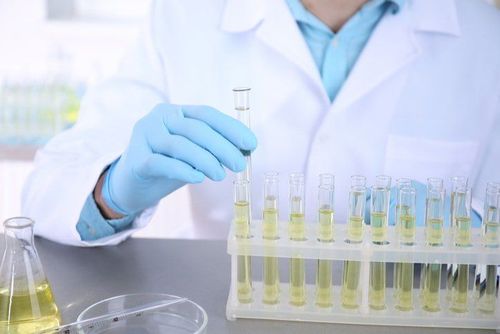
4.2 Technique for collecting urine through a bladder catheter
Collect urine through a bladder catheter in the following cases:
Patients with incontinence; Children who cannot collect urine by themselves; Women who are menstruating;
Procedure for collecting urine through a catheter:
The patient lies comfortably on their back on the bed, spreading a plastic sheet under the patient's buttocks. Cover with a robe, remove the patient's pants, and rotate the robe diagonally to cover the legs and genitals, with both legs propped up, and thighs slightly spread; Place a tray or sterile instrument package, and a dirty laundry bag between the patient's legs; Open the sterile tray, and spread a sheet with holes to expose the genitals; Line the gauze and stand the penis upright to expose the foreskin (for men), place gauze on the pubic bone (for women), and disinfect the genitals with betadine solution or red medicine. For men, disinfect the urethra and foreskin; for women, disinfect the labia majora and minor, and the urethral opening; Lubricate the catheter tip, use a Kocher clamp to clamp the end of the catheter, and place the sterile bean tray in the middle of the thigh; Gently insert the catheter tip into the patient's urethra about 4-5cm for female patients and about 15-20cm for male patients; open the Kocher clamp. When urine flows out, discard the first urine, and take the next urine into the test tube about 20ml when all the urine flows out, fold the catheter tip back and pull the catheter out; Dry the genitals, remove the gauze, remove the plastic wrap, put on the patient's pants, help the patient lie comfortably, remove the towel, and cover the patient with a blanket; Send the specimen and test paper to the laboratory.
Please dial HOTLINE for more information or register for an appointment HERE. Download MyVinmec app to make appointments faster and to manage your bookings easily.





